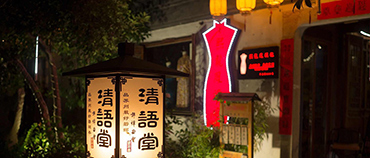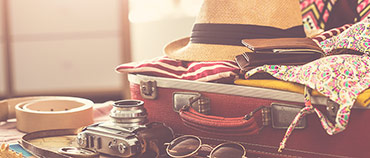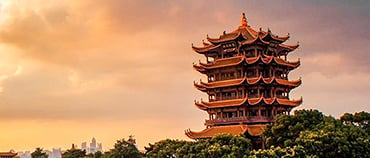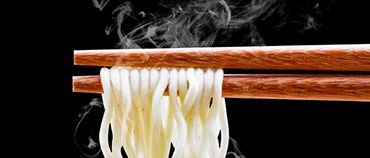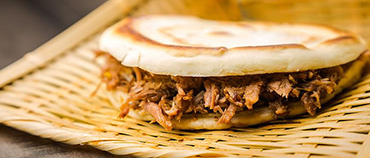
When you experience the splendor that is Suzhou, ChinaTours.com has the local expertise to maximize your time for activities on your China getaway. Finding your every need catered to by our friendly team, in the most spectacular fashion. And this includes Suzhou nightlife – where to go and what to do…
When night time makes up 50% of your entire holiday, don’t be caught wasting precious time on your Suzhou Tour! Whether you long for the thrill of Suzhou nightlife or you’re eager to put your feet up in one of the many tea houses to mingle with the locals. This travelers guide will ensure you have no wasted hours abroad. So let your hair down, and rock-out in Suzhou.
Suzhou nightlife
A city’s nightlife is an important part of experiencing the true essence of a place, and Suzhou is no exception. A city blended with both modern and ancient charms, Suzhou provides a vibrant and enchanting nightlife with a variety of activities to meet the diverse needs and tastes of tourists. After a day of action-packed excursions, Suzhou nightlife offers you a wide variety of activities – you can sip on a cup of fine tea and rest your feet in traditional tea-house, listening to the melodious sounds of Kunqu (昆曲) and the Suzhou Pingtan; or take a night cruise to appreciate the enchanting scenery along the river banks.
Wandering on the bustling streets, or sampling Chinese spirits in the pubs and clubs, you can always find Suzhou nightlife to be fun and interesting…
Suzhou Tea-House musical performances

A night out in the Canglang or Pingjiang Districts will never be complete without appreciating a traditional Suzhou musical performance such as Pingtan or the Kun Opera. Featuring the elegance of the Wu language, and with its captivating story-lines, the gentle melodic rhythm and graceful performances. These Suzhou Musicals are as impressive in beauty as they are in talent.
Sitting in an antique tea-house or traditional theater, you can order a pot of wonderful tea, taste the exquisitely delicious Suzhou dim sum, and experience the wonderful Suzhou nightlife as if you’re a local. With abundant cultural connotations and a powerful sense of historical significance, any one of the traditional Suzhou musical performances is a visual experience not to be missed. So indulge yourself in Suzhou on your China tour.
Night Cruise on the Moat

Contrasting our Li River and Yangtze River Tours, The Night Moat Cruise in Suzhou is one of our most charming. With a star-strewn night sky and an old worldly feel, you’ll breathe new Suzhou nightlife on this majestic evening cruise.
Drift the criss-cross canals, as you cruise through the striking scenery of Suzhou’s shimmering lights, sparkling river, weeping willows and ancient houses that line the river bank. ChinaTours.com provide only the best guides to share the truly romantic tales of Suzhou and The Moat’s past. In such a serene and picturesque atmosphere, it really does feel like you are sailing the waters of a thousand years ago, with so many unique antiquities to be seen.
The Master-of-Nets garden at night

Suzhou’s only publicly accessible garden at night, The Master-of-Nets Botanical Garden is a true gem. Both mysterious, and considered to be the most elegant attraction of Suzhou nightlife. Stroll through the garden and experience the stunning floral display bathed in yuè liàng de guāng, or the light of the moon.
Swoon to the sounds of the magnificent Pingtan, the traditional Kun Opera or the unique melodies of the Jiangnan Sizhu as you saunter around the city of opulence that is Suzhou. Why not spend the night gaining a deeper understanding of a true Chinese treasure?
Night Out on Jinji Lake

The Jinji Lake at night is one of the many world-famous Xuhou nightlife destinations. The dazzling neon lights reflecting across the lakes form a delightful contrast to the dark skyline. The fountains fire in synchronicity, combining lasers, pyrotechnics, and light shows to perfectly mimic the rhythm of the music, illuminating the square in light and sound. It is truly a visual spectacle to behold, proving that this old city can still do some new tricks.
Suzhou Nightlife – night markets
Pingjiang Road

Considered by many to be the best preserved ancient street in Suzhou, Pingjiang Road still clings to the styles and trends of the Tang and Song Dynasty, and no China tour in Suzhou would be complete without a stop along this iconic street.
Sweep down the ancient stone paths, as you make your way down to the corner shops to buy some exquisite trinkets and souvenirs; or sample the tasty local delicacies from the popular stalls and restaurants. The tranquil sound of the flowing river under the ancient stone bridges nearby and the sight of locals going about their business within their antique dwellings is pure holiday magic. Experience the traditional riverside Kun Opera and Pingtan, fueling tourists romantic fantasies of the Jiangnan water-town for centuries.
Shantang Street

Near Tiger Hill, Shantang Street is a historical road over 1200 years old, with its traditional styled homes lining the river banks, and local relics such as the stone arch, the ancient altar or the many clubhouses scattered around the area. There are many ways to get explore this great Suzhou nightlife attraction, including waltzing through serene lanes and taking in the ancient buildings, haggling with the local traders for a delicate oil-paper umbrella or other traditional handicrafts. After sitting in the traditional performance hall for a unique Kun Opera show. ChinaTours.com can think of no better way to finish the night off than to take a boat trip along the river, soaking up the fabulous views and local lives of the ancient city.
Suzhou Nightlife – pubs and clubs
Suzhou’s nightlife includes a bustling city with a colorful and lively bar scene. Here, locals and travelers alike enjoy the vibrant atmosphere by hitting the dance floor with the music and flickering lights, immersing themselves in the ambiance of this lively garden city.

Harry’s Forbidden Bar
With its live music and beer on tap, Harry’s Forbidden Bar is a wonderful place to grab a bite and beverage. The well known Singaporean establishment is the local watering hole for so many locals after a long day of work. The authentic Southeast Asian delicacies served here, by the friendly staff, are downright delicious. Our travel guides say it’s definitely worth a try.

ECHO Bar
Do not be deceived by the classic Chinese exterior because inside ECHO Bar is a vast hall with Karaoke machines for the locals while the big shots are preparing their vocal skills. A fashionable and glamorous stop to contrast the man-cave feel of the previous bar, spending some time in ECHO Bar is quite a lovely way to spend an evening.

Pandora Club
Pandora has gained significant recognition in Suzhou over the last few years, with China’s A-list celebrities occasioning the Club to check out the nightlife, sometimes even giving surprise performances. Bringing together the best Suzhou has to offer with Pandora’s luxurious Interior design, plentiful beverage selections, and attentive service staff. This Club is a sure thing for the party-animals of Suzhou.

Boiling 100°C
The hottest nightclub in all Suzhou, the dance floor is packed until the early hours. It is renowned for the variety of drinks and cocktails and live music.

